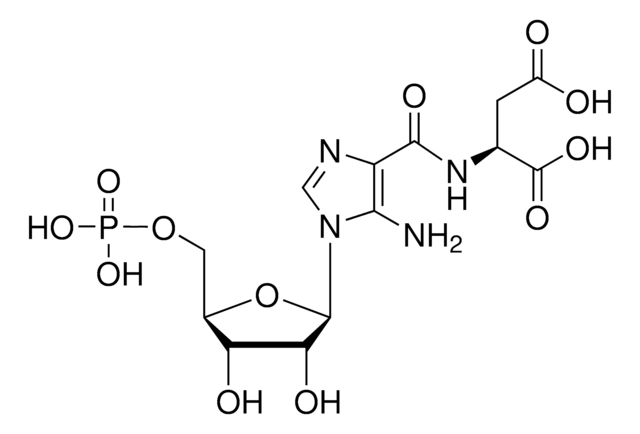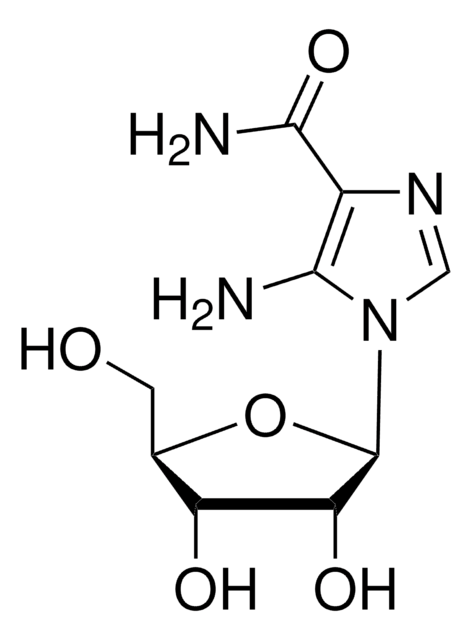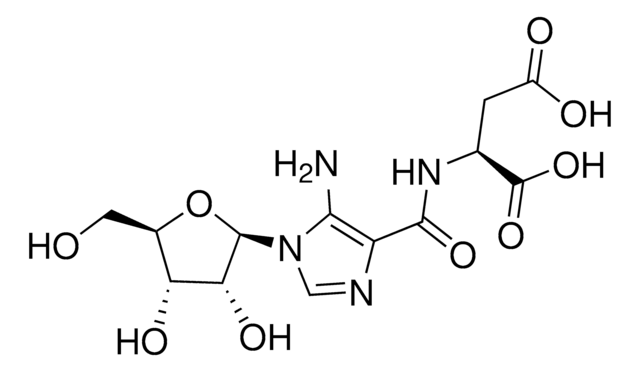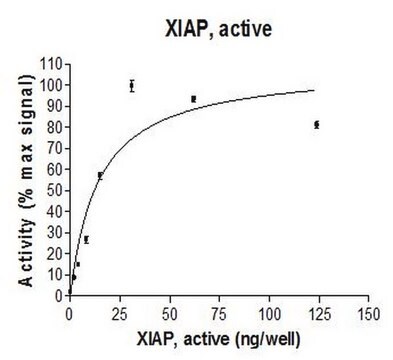Wichtige Dokumente
06595
5-Aminoimidazol-4-carboxamid-1-β-D-ribofuranosyl 5′-Monophosphat
analytical standard
Synonym(e):
AICAR-monophosphat, N1-(β-D-5′-Phosphoribofuranosyl)-5-aminoimidazol-4-carboxamid, NSC 283955, NSC 292227, ZMP
About This Item
Empfohlene Produkte
Qualität
analytical standard
Qualitätsniveau
Assay
≥98.0% (HPLC)
Optische Aktivität
[α]/D -69.0±3.0°, c = 0.1 in sodium bicarbonate
Haltbarkeit
limited shelf life, expiry date on the label
Anwendung(en)
forensics and toxicology
pharmaceutical (small molecule)
Format
neat
Lagertemp.
−20°C
SMILES String
O[C@H]1[C@@H](O)[C@H](N2C=NC(C(N)=O)=C2N)O[C@@H]1COP(O)(O)=O
InChI
1S/C9H15N4O8P/c10-7-4(8(11)16)12-2-13(7)9-6(15)5(14)3(21-9)1-20-22(17,18)19/h2-3,5-6,9,14-15H,1,10H2,(H2,11,16)(H2,17,18,19)/t3-,5-,6-,9-/m1/s1
InChIKey
NOTGFIUVDGNKRI-UUOKFMHZSA-N
Suchen Sie nach ähnlichen Produkten? Aufrufen Leitfaden zum Produktvergleich
Allgemeine Beschreibung
Verpackung
Lagerklassenschlüssel
11 - Combustible Solids
WGK
WGK 3
Flammpunkt (°F)
Not applicable
Flammpunkt (°C)
Not applicable
Hier finden Sie alle aktuellen Versionen:
Besitzen Sie dieses Produkt bereits?
In der Dokumentenbibliothek finden Sie die Dokumentation zu den Produkten, die Sie kürzlich erworben haben.
Unser Team von Wissenschaftlern verfügt über Erfahrung in allen Forschungsbereichen einschließlich Life Science, Materialwissenschaften, chemischer Synthese, Chromatographie, Analytik und vielen mehr..
Setzen Sie sich mit dem technischen Dienst in Verbindung.








